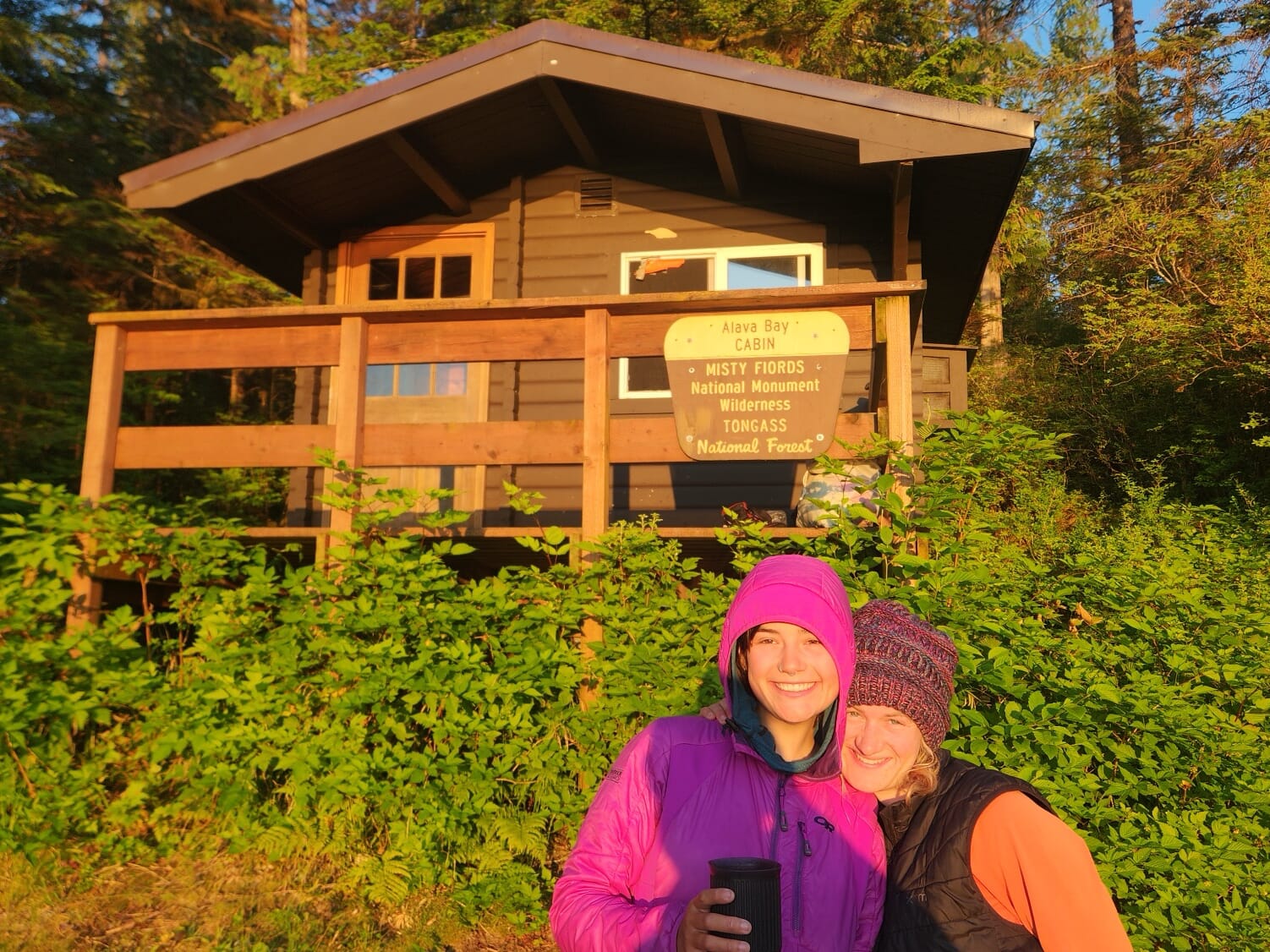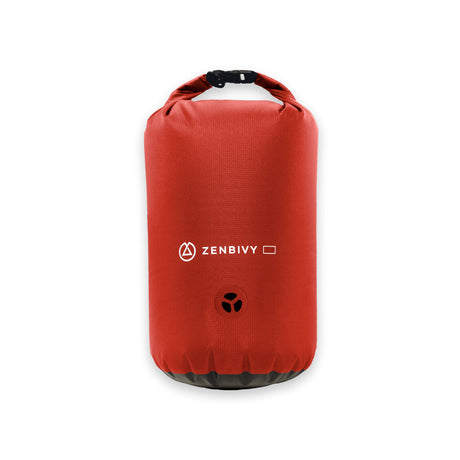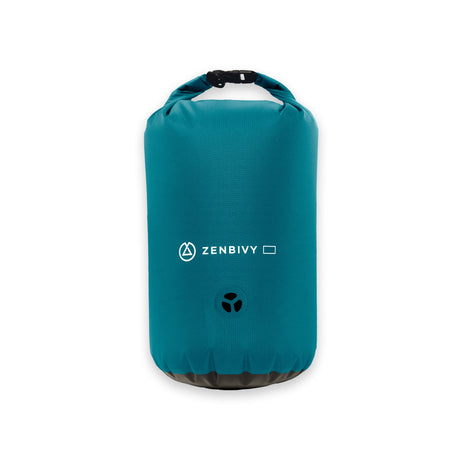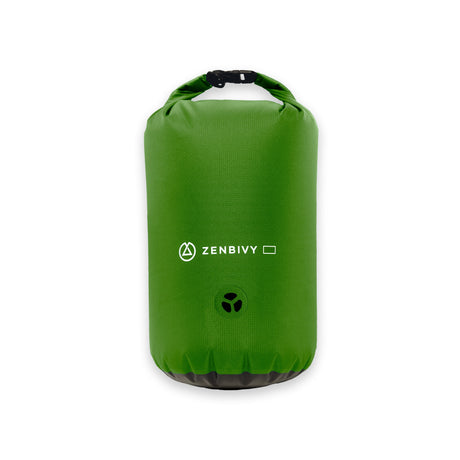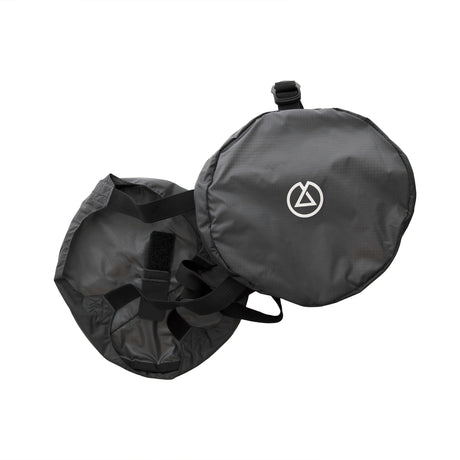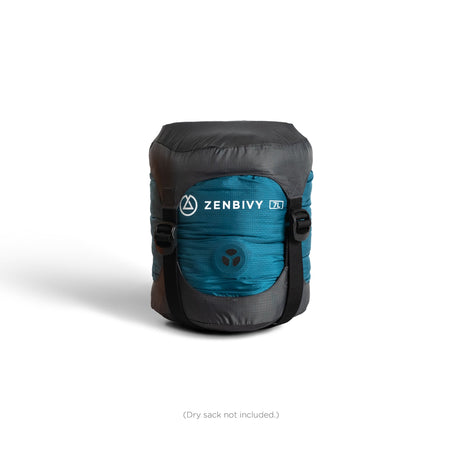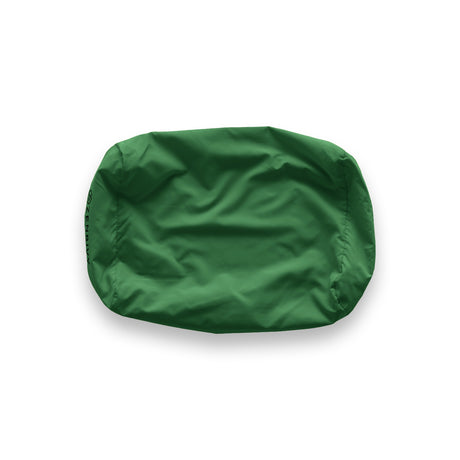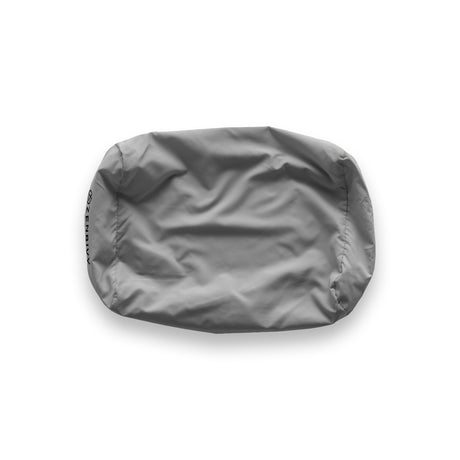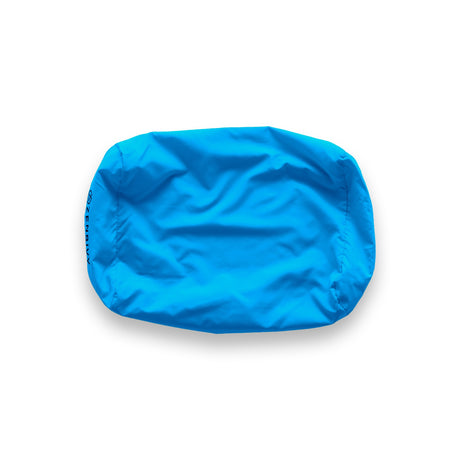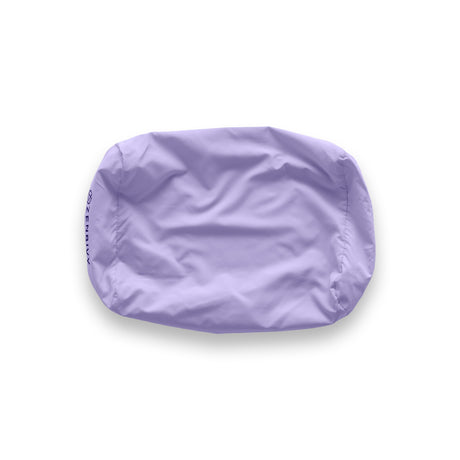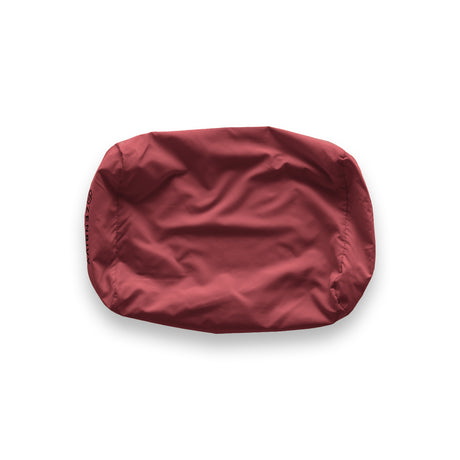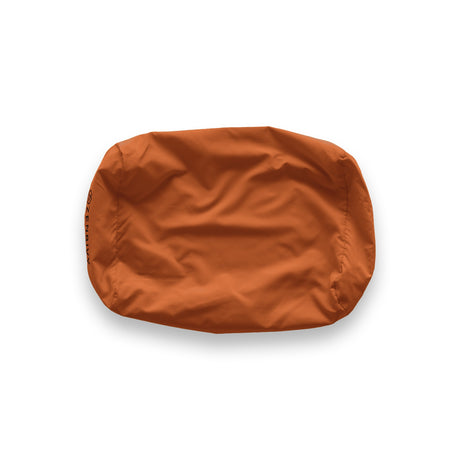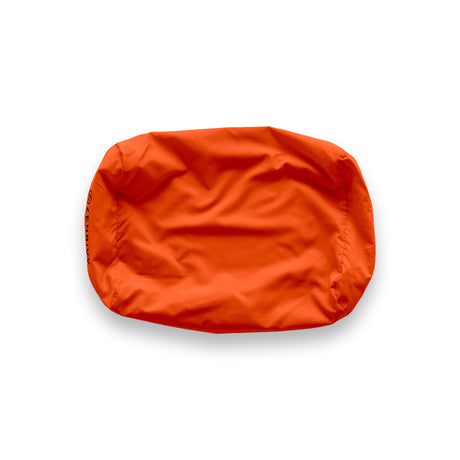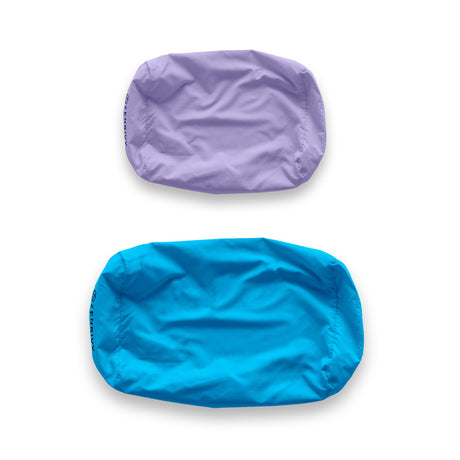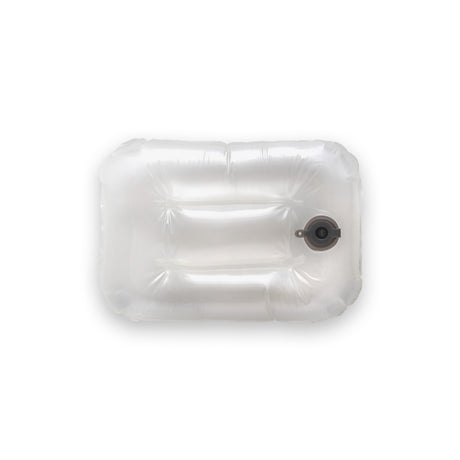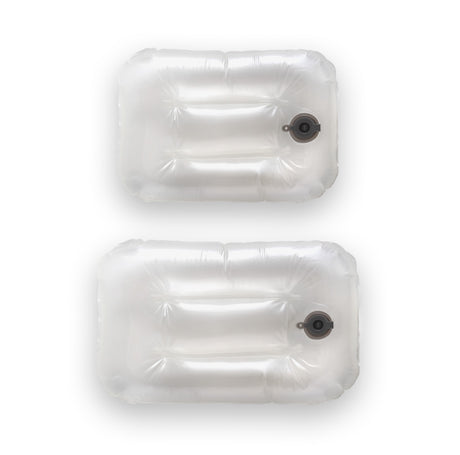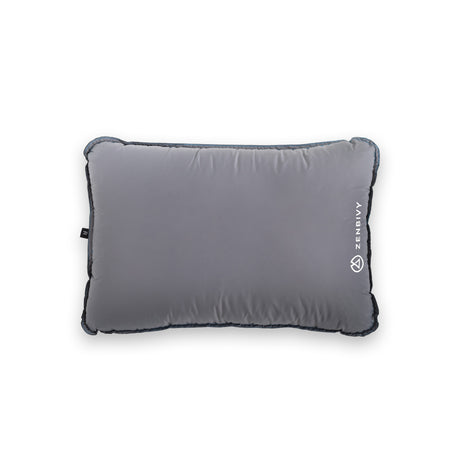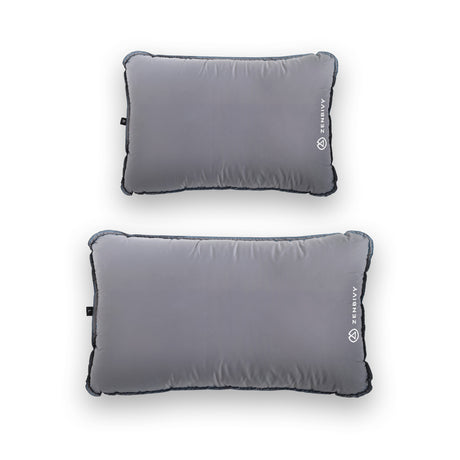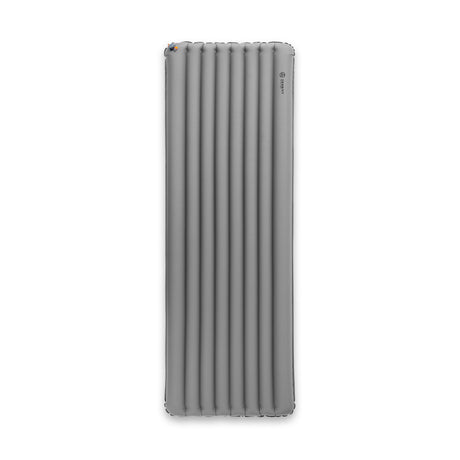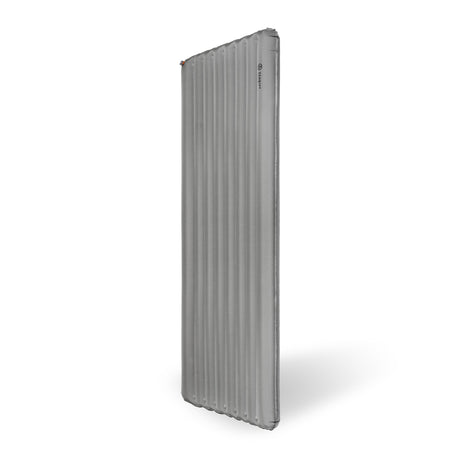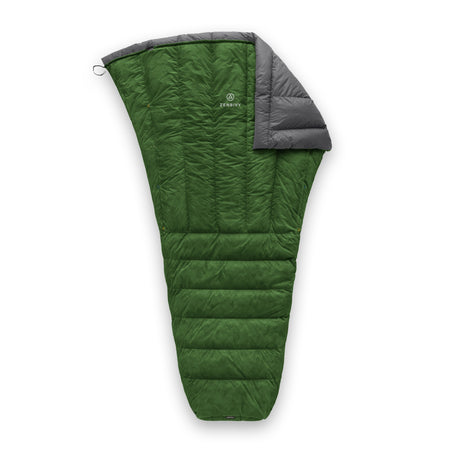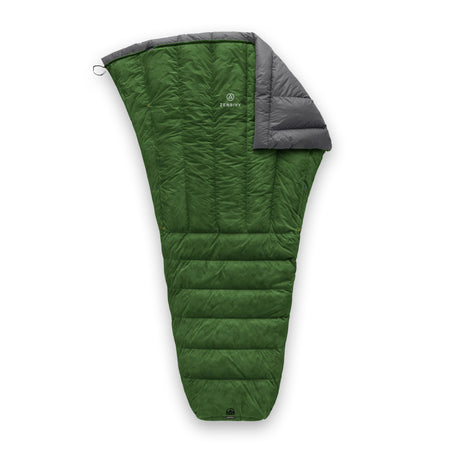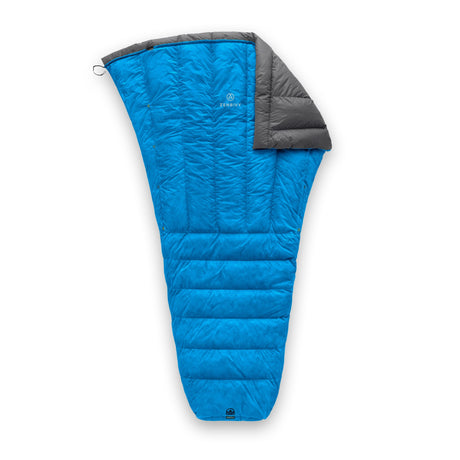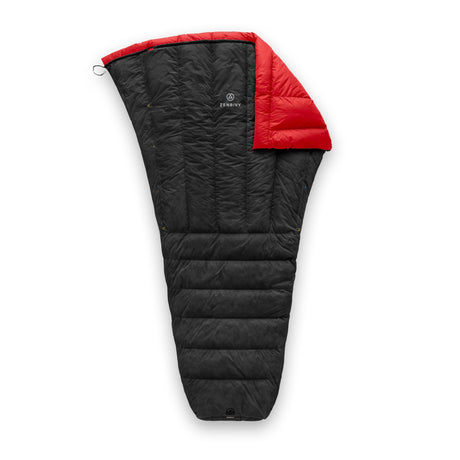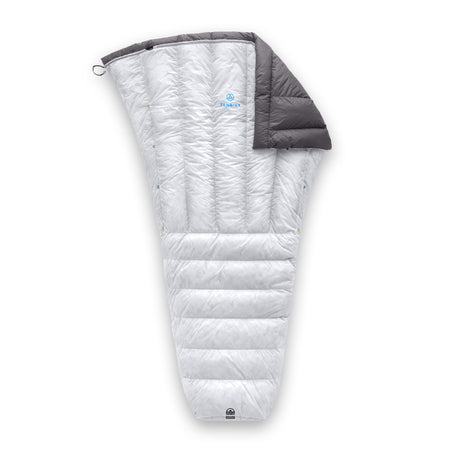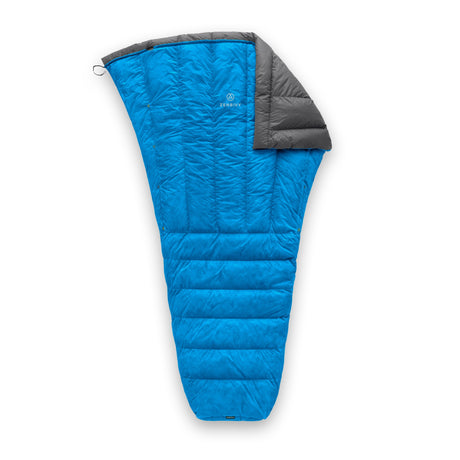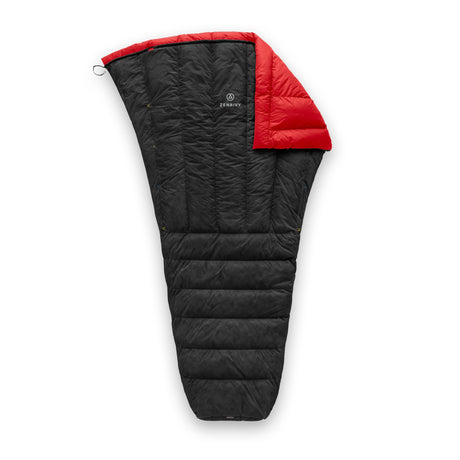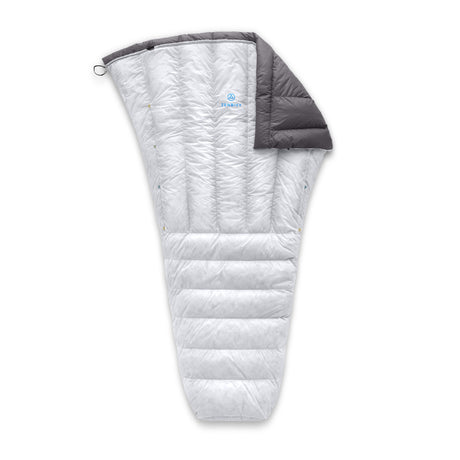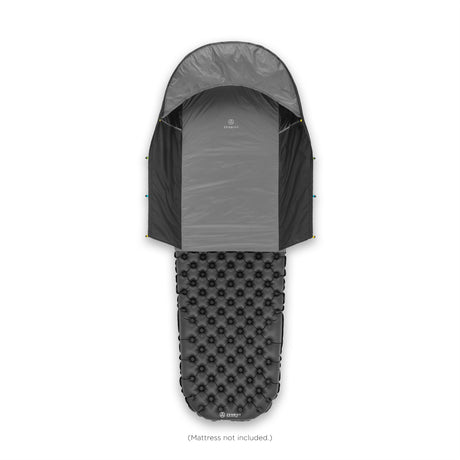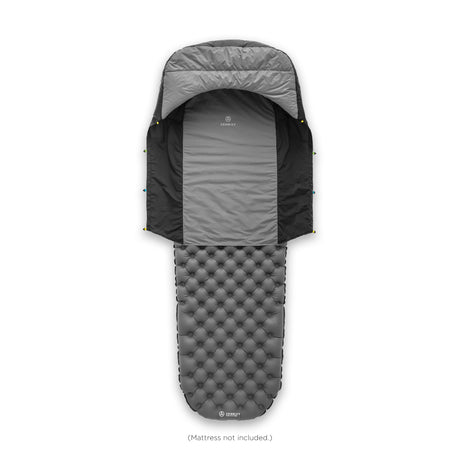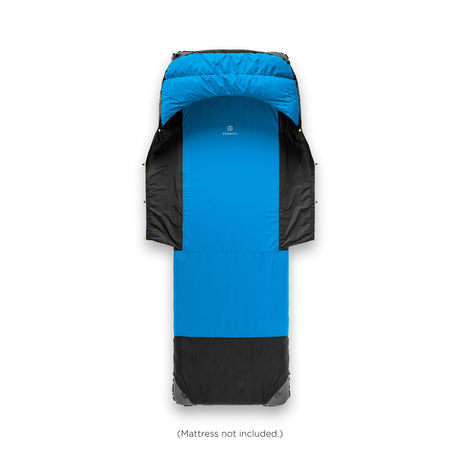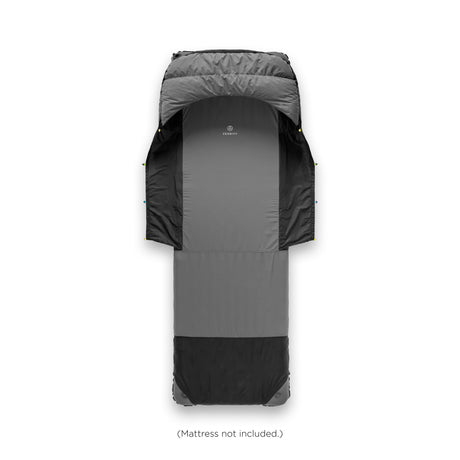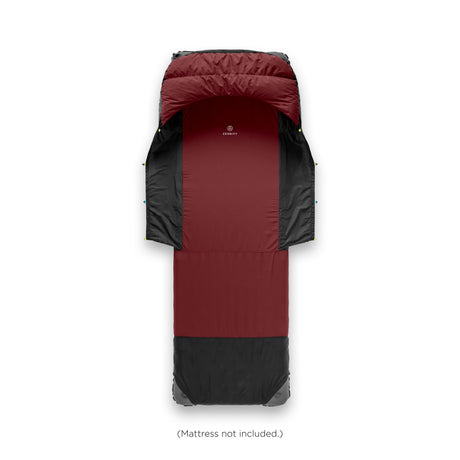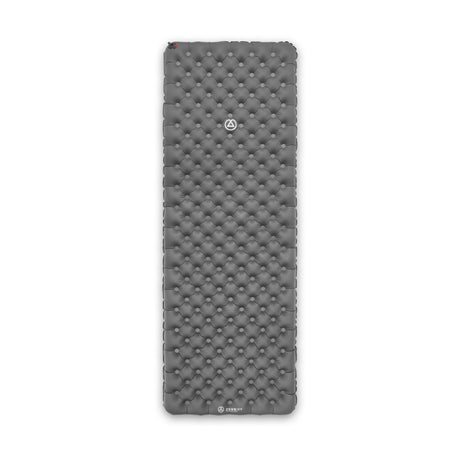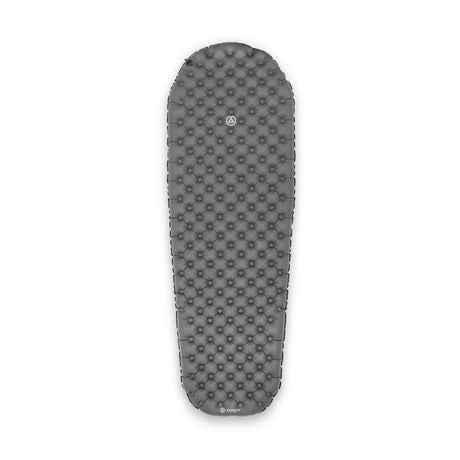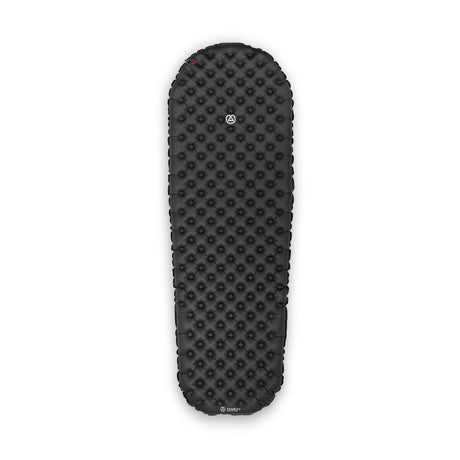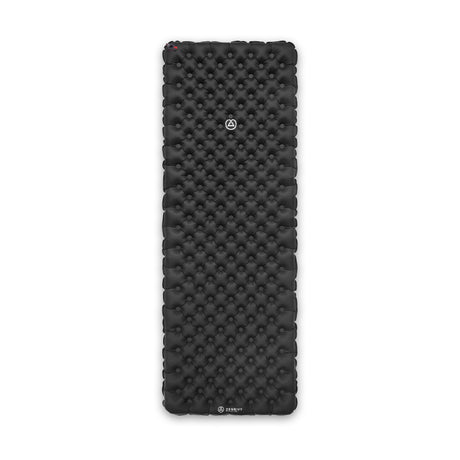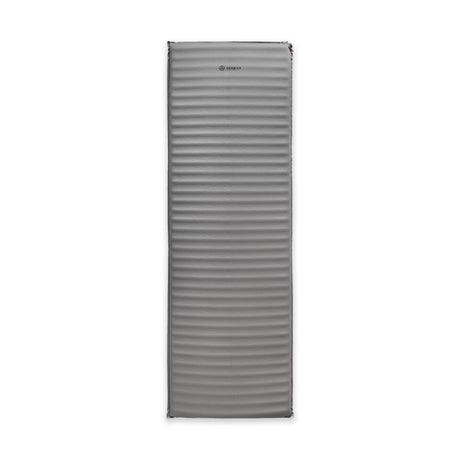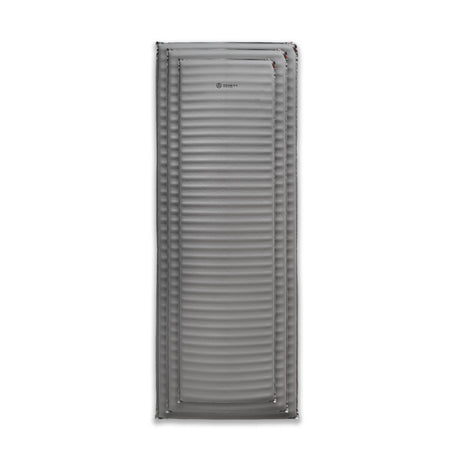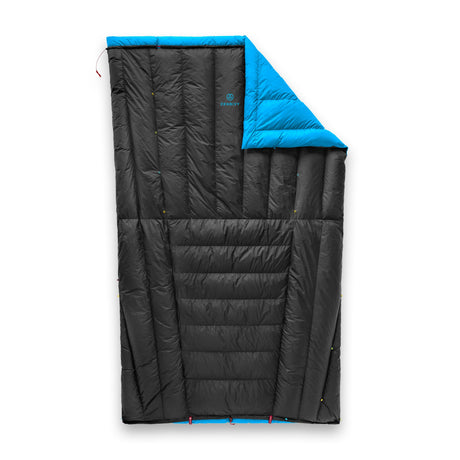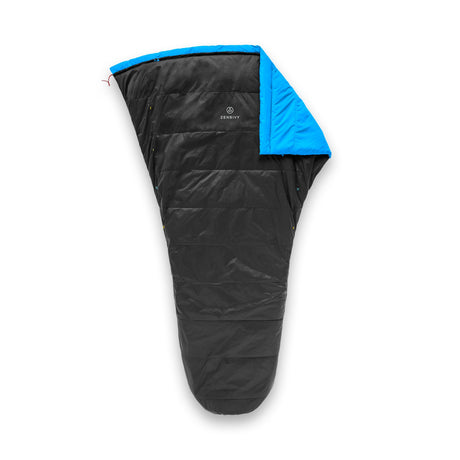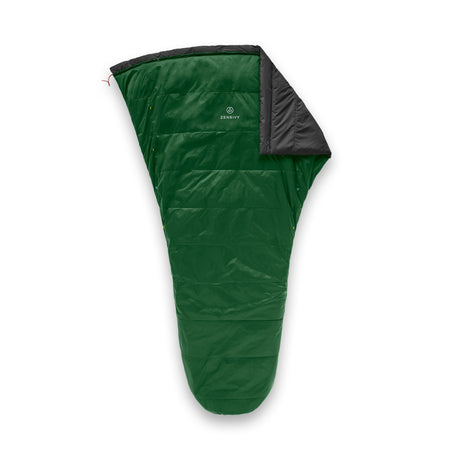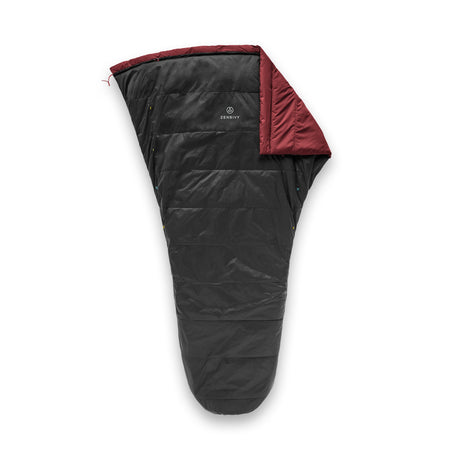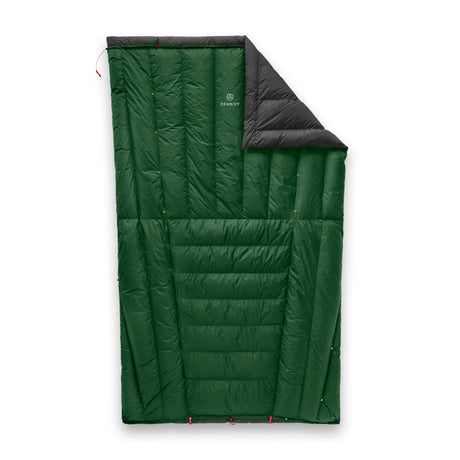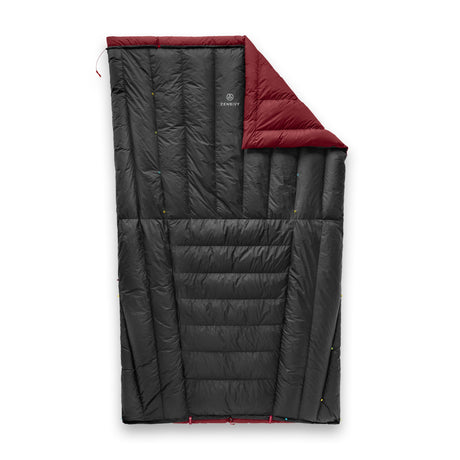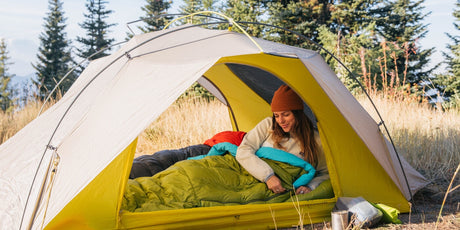We’re in Alaska.
There’s so many emotions attached to that sentence. We’ve been anticipating our arrival here for a year, and now that we’ve finally crossed the border it feels surreal. Everything is moving quicker now, but ironically, I wish that things would slow down. We’re covering more mileage than we ever have, but as the days slip by even faster it makes me want to paradoxically slow down. This, unfortunately, is the downside to extended expeditions; just as you begin to master the flow of trip life, the end of your journey finally rears its head.
 Us on Tongass Island, AK!
Us on Tongass Island, AK!
Our crossing into Alaska was a drawn out affair. After resting in Prince Rupert, BC for 2 days we headed out to the outer coast towards the Dixon Entrance. The Dixon Entrance is one of the so called “cruxes” of our trip; it’s one of two extremely exposed areas of coast line on the Inside Passage. It can be plagued by large swells (think 2-4 meters), wind, and tide races; fortunately, we experienced nearly perfect weather.
 White sand beaches of the outer coast.
White sand beaches of the outer coast.
The outer coast feels so starkly different than the inside. As soon as we exited Venn Passage we were greeted by white sand beaches, deep turquoise water, and endless stretches of ocean. It took us about 3 days to make our way to Portland Inlet, which is one of the largest inlets in BC and presents some of the trickiest intersections of tides and weather on the outer coast. We ended up crossing at around 5:00 PM after paddling through heavy fog all morning; the fog cleared at 1:00, giving us the perfect weather window to skirt across the Inlet. After crossing we spent the night on Boston Islands, a gorgeous collection of islets that are practically tropical. We celebrated with backcountry pizza and spiked hot chocolate.
 Me, enjoying the white sands of Boston Island!
Me, enjoying the white sands of Boston Island!
The next day we actually crossed the Alaska-Canada border as we paddled from Boston Islands to Lincoln Passage. Crossing the border was strangely anticlimactic; there isn’t exactly a line drawn in the water where the ocean magically “turns American”, so we were left guessing on when we actually passed the line. We had already cleared customs via the CBP Roam app a few days prior, so we were assured that the US government approved of our impending arrival.
The wind picked up once we were in Alaska, and we decided to find shelter inside Lincoln Passage alongside multiple commercial fisherman. We were invited to stay on a private float by a fisherman; unfortunately, the next afternoon the owner of said float arrived during our spontaneous rest day and promptly kicked us off. Oops! However, we ran into a pair of paddlers from BC who we would end up leapfrogging for the next two sections, so we were eventually glad that we had dilly-dallied in Lincoln Passage for the day.
 Our gear from above on the float.
Our gear from above on the float.
The next day we crossed from Tongass Island to DeLong Islands. We rounded Cape Fox and Tree Point in gentle swell, and were pushed up the coast by a nice flooding current. It was inspiring to see open ocean directly over our left shoulder, especially because it was my first time really paddling in any swell. It was surprisingly quite fun, and I’ve realized I strongly prefer swell to wind waves.
We shared Delong Islands with Heather and Michele, the aforementioned BC paddlers from the Passage Paddle. They had started their expedition in Bauza Cove, and we had finally caught up with them after they were delayed in Prince Rupert sorting out visas. We had a fantastic time swapping stories from our respective trips, and ended up sharing campsites with them on the way to Ketchikan.
From DeLong Islands we paddled onwards to Ketchikan, AK. We spent our first night in a USFS cabin at Alava Bay; we found it impeccably well maintained and clean, with gorgeous views of the ocean and a great outhouse! Heather and Michelle shared the cabin with us, and we continued to spend time getting to know each other before our early push to Ketchikan the next day.
Unfortunately, the winds had other plans for us. We paddled approximately 14 nautical miles before getting hit with 20-25 knot gusts of headwind, forcing us to get off the water about 8 nm before Ketchikan. However, we were offered a place to stay at a backcountry wilderness base camp run by Bearnoff Expeditions, and even given snacks and lemonade by the lovely fishing guide. This helped bolster our spirits, and we were able to get to Ketchikan the next day.
Ketchikan was an amazing seaside town that clearly catered to tourism in the summer. The town sees anywhere from 3-7 cruise ships a day; each cruise ship can contain thousands of passengers, which sharply skyrockets the population of the historical fishing town. We spent most of our time hanging out at the Ketchikan Yacht Club chatting with other mariners. Many
had sailed up from Washington state, and had heaps of advice and help with Alaskan waters. We stayed at the First United Methodist Church; although the hostel was comfortable enough, it came with a 20:00 curfew that took some adjusting to. However, it did force us to go to bed at a reasonable time while in Ketchikan.
 The boardwalks of Ketchikan, AK.
The boardwalks of Ketchikan, AK.
We left Ketchikan after 3 days of rest, and continued onwards towards Meyers Chuck. We spent 3 days crawling up the coast to reach the tiny sea side community. Meyers Chuck is an incredibly unique fishing town that is home to around 27 residents. Many of the houses are perched on stilts that teeter above the water; paddling among these felt almost like the Alaskan version of kayaking Venetian canals. We had heard that Casey, the post mistress, had a side hustle baking cinnamon rolls for transient boaters in the summer. Being starving paddlers we promptly placed an order for 3/4 a dozen for the following morning. We picked them up at 07:00 sharp, and enjoyed them on the dock of the post office before setting out towards the USFS cabin at Frosty Bay.
 We enjoy cinnamon rolls in Meyers Chuck.
We enjoy cinnamon rolls in Meyers Chuck.
Frosty Bay was an absolute delight, and we were able to celebrate Sasha’s birthday the following morning before paddling onwards to Berg Bay. We had hoped to stay in the forest service cabin there, but unfortunately we arrived and found that a perfectly lovely family had already booked the place. They graciously allowed us to stay on the cabin’s lawn, which was a fantastic alternative.
 The Frosty Bay cabin! A delightful retreat.
The Frosty Bay cabin! A delightful retreat.
Unfortunately, the next day’s currents were looking grim. In order to utilize the currents effectively, we would have had to wake up at 02:30 in the morning to be on the water at 04:00. We set our alarms for 02:30, and then upon waking up we immediately decided that we were not keen to undertake the suffer-fest that a 04:00 start entailed. We went back to sleep, and were able to book a water taxi into Wrangell that picked us up around noon.
In Wrangell, we’ve been staying with some lovely friends-of-friends as we resupply and rest. We have to cross a tricky tidal flat when we leave, so figuring out the logistics of timing has consumed a good deal of time here. Other than that, we’ve enjoyed our time catching up with Heather and Michele (they arrived around the same time we did!) and getting to know this seaside town. We’re looking forward to the next few weeks as we savor the last segment of our trip!

